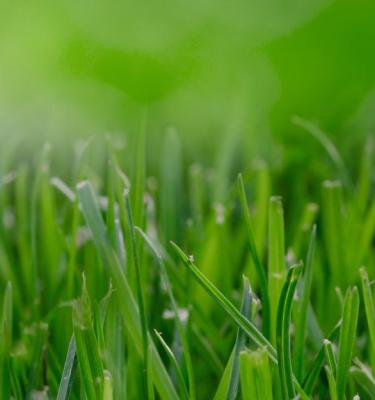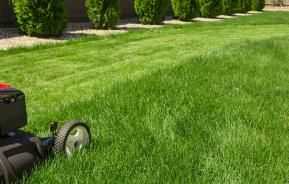
Hey Scotty, what do I need to know before I grow?
One thing to remember… fertilising is key. Luckily, it’s also easy. The average lawn takes less than ten minutes to fertilise and rewards you with growth for months afterward. Your lawn not only gets greener, but tougher: able to resist everything from dry conditions to weed invasion. Here’s some tips:
- Feed three times a year – early Spring, early Summer (before it gets too hot), and mid to late Autumn. Rake the lawn before you start, clearing away leaves and other debris. If you only feed once a year, do it in late Spring to early Summer.
- Choose a fertiliser that’s right for your lawn variety and for the time of year.
- Read the directions for use on the bag, and don’t apply at a heavier rate than what’s been recommended. Otherwise, you run the risk of burning your grass
When you’re new to lawn care, picking the right fertiliser can be daunting. Maybe you’ve already been through it: standing in front of the shelf at your local hardware garden centre, staring up at all types of options, making all types of claims. Overwhelming, right?
To make it easier for the curious, we’ve put together a simple guide below…
The Good, the Bad & the Growthy - Your guide to fertiliser types.
Conventional
A conventional or traditional fertiliser is lawn food at its most basic. While they’ll often be the cheapest on the shelf, it’s very rare that one of these will be the best option for your lawn.
Key Features:
- Crystalline or powdered appearance
- High application rates
- Short term feeding
- Surge growth (ie. a rapid response that tails off quickly)
- Frequent applications
Traditional
Traditional lawn fertilisers tend to drop their nutrient load the moment they’re watered in. This leads to a much higher rate of nutrient run-off into drains and waterways.
Basic
Basic fertilisers rely on the lawn being able to absorb what it can as the nutrients flush through the soil. It means you’ll have to apply the fertiliser more frequently (every month to six weeks), which will eventually have a negative effect on soil health and chemistry.
Slow Release
Compared to the basic options, slow-release fertilisers are much more advanced in their nutrient delivery. The best formulas will feed lawns for up to three months. Key Features: Slow and continuous release of nutrients No nutrient dump after watering in Low application rate (three per year) With a quality slow-release formula like Scotts Lawn Builder, you can expect more consistent growth and greening across the whole cycle of your application. Cheaper slow-release formulas will drop a lot of their nutrients early on, giving a surge of growth and greening but tapering off quick. Choosing a higher-quality product stops this kind of surge growth and prevents nutrient run-off too.
Natural or Organic
In the world of fertilisers, the word ‘organic’ can be confusing. While a traditional blood-and-bone fertiliser will certainly have organic materials in it, it’s probably more accurate to describe it as “organic-based”. So how do you know? Your safest bet to find a true organic fertiliser? Look for the Australian Organic Certified logo on the pack. Anything that’s 100% organic should have the credentials to back it up. Fertilisers are usually split into two main groups – organic (natural) and synthetic (manufactured). There is also a third group - a blend of the two. Scotts Lawn Builder Plus Organics Lawn Food & Soil Improver combines the attributes of a quality slow release fertiliser with the benefits of added natural ingredients like seaweed, fish, manure and bio stimulants. It’s the best of both worlds.
TOP TIP - High nutrient run-off isn’t just bad for the environment. It sucks for your wallet too, sending valuable nutrients far away from their targets. Talk about money down the drain…








